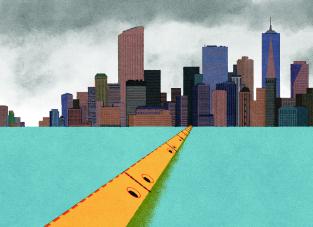Distributed Energy Storage
Local Project
Distributed or decentralized energy storage involves creating a web of smaller storage devices and is an important source of low carbon ‘flexibility’ – making sure cheap, clean solar and wind energy is available when we need it. The two main sources of distributed energy storage are small-scale batteries and electric vehicles (EVs) (which are essentially big batteries on wheels). More and more electric vehicle models include ‘vehicle to grid’ functionality meaning grid operators can draw power from a connected EV to manage power demand.
Electricity can be stored when green energy is abundant, and then used (or sold back to the grid) later on when green energy is scarce. When combined with rooftop solar, for example, distributed energy generation storage can make buildings self-sufficient with the potential to massively reduce greenhouse gas emissions and energy bills.
Barriers to widespread adoption of distributed energy storage systems include the costs of batteries, unhelpful planning and regulation, the need to support battery manufacturing and associated supply chains, and the need to modernize electrical grids to better integrate distributed storage solutions.
Still, prices for lithium ion batteries are rapidly falling and new, improved battery technologies are in development. Utilities are beginning to update grids to support decentralized low carbon storage because it is cheaper than paying dirty, expensive gas stations to turn on to meet energy demand, reduces the need for other expensive infrastructure upgrades, and gives ordinary people a way to benefit from taking part in the green energy transition.
Add 2 Infrastructure Resilience tokens to your player board.
You may take this action once per round.

Distributed Energy Storage (Project Drawdown)
Distributed Energy Storage, Efficiency, and Demand Response (Clean Energy Group)
Solar + Storage (Solar Energy Industries Association)
Switch to an electric vehicle.
Purchase a home battery system.
Contact your political representatives urging them to invest in and streamline the rollout of low carbon flexible technologies.



